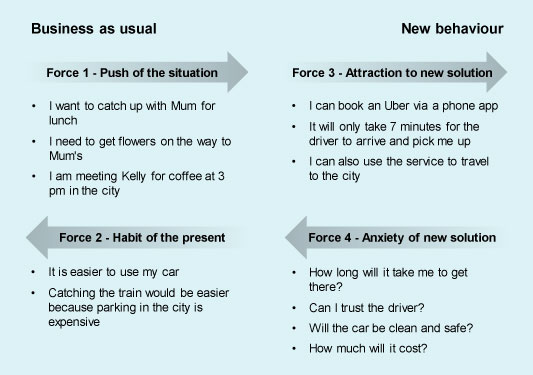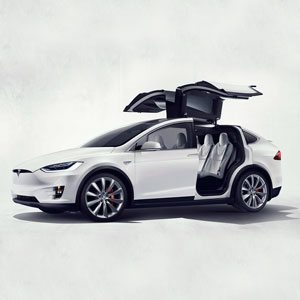Part 1: Driverless Cars - What job do they do?
Product Design Melbourne
It feels to me that autonomous cars are inevitable. How does it feel to you? Why do most of us believe that if we live long enough, our days of driving and even the concept of car ownership will pass? We all have a unique picture in our mind of what this future will look like. This is driving the inevitability we feel.
How can we understand what people have in their minds? What are the factors that people consider in making the decisions about how they get from place to place? If you had to design a vehicle for the driverless future, what would you create?
Looking through a different lens
JTBD, Jobs To Be Done, is a way of looking at a user's needs from the perspective of what products or services people 'hire' to complete a job. As Harvard Business School marketing professor Theodore Levitt put it, "People don't want to buy a quarter-inch drill. They want a quarter-inch hole!" In this example, the quarter-inch hole is the job someone wants to achieve, and the drill is one option or method for completing the job.
Tony Ulwick first proposed that, with few exceptions, every job people need or want to do has a social, a functional, and an emotional dimension. By understanding each of these dimensions, it is possible to design a product that's precisely targeted to the job. You can provide the products and services that customers will buy to do their job.
I like to use the framework proposed by Clay Christensen in his book, "Competing Against Luck" to build an understanding of the dimensions of a job.
As an example, let's look at Jenny, a product designer in Melbourne. Jenny is travelling from her home to her Mum's house on Mothers Day and is considering taking an Uber. Let's consider the forces that are working on her as she completes the job of, "Travelling from home to Mum's house."
With a little bit of thought we can imagine the motivations, thoughts, fears and hopes influencing her choices, and group them under four broad forces.

I think this is an interesting view of the dimensions acting on her decision to get her job done.
We have used a theoretical example here to illustrate the forces. The factors in this example are based purely on my personal view, what I can imagine when I put myself in Jenny's position.
How does this lead to designing the autonomous future?
Let's take it a step further and use this framework with real information rather than our my imagination.
How do we do this? We start by interviewing Jenny about a recent journey she took. The interview focuses on her timeline, decisions points and the reasons why she chose a particular method to complete the journey. In doing this we want to understand what tools, infrastructure or services that Jenny used to complete the job of seeing her mother.
These interview insights can then be unpacked into the force model to try to identify the things impacting her decisions.
When we interview more people about their individual experiences, we can build a matrix of influencing forces. By understanding the dimensions a group face to complete a job, we can start to understand what influences their behaviour. Then we can start to consider what might encourage people to change from their status quo to a new way of doing things.
Do you think these insights would be valuable to you if you were designing the future autonomous car system?
Note that we haven't been focusing on arriving at solutions or asking people if a current solution meets their needs.
We have used this approach to get an understanding of the why people make the choices they do and the paths they take to make the decision. In essence, working out what needs they have. We can now write these understandings into a series of outcome statements. The outcome statements are then used as inputs into the autonomous car system we are designing.
Next month I will be writing about how we can use force data from interviews to uncover key needs and decide which ones are the most important.
Continue to Part 2: Driverless Cars - What job do they do? here.
About Jobs to Be Done
The Jobs To Be Done theory was developed over the past 25 years via the work of Tony Ulwick in the early 1990s. Clayton Christensen expanded, adapted and developed the theory at the end of the 1990s. Over the last decade, Bob Moestra and Chris Spiek developed the JTBD practice further. Tony Ulwick and his company Strategyn have 25 years of experience implementing his patented process. A process which is proven to create successful new products 79% of the time.
Shoot me an email at This email address is being protected from spambots. You need JavaScript enabled to view it. and I'll send you a list of useful references.
If you would like some specific advice about how to apply JTBD techniques to your new product, give Bayly a call here in Melbourne on +61 3 9413 9000 or send us an email at This email address is being protected from spambots. You need JavaScript enabled to view it.. We’d love to chat!
Don't miss out. Sign up for our newsletter now!
 |
Mark Bayly, 14 June 2017 |
Tesla Autopilot Full Self-Driving Hardware
|





